Moss is that soft, green plant that often pops up where you least expect it – on rocks, walls, and sometimes where your grass should be growing. If you’ve noticed these small, carpet-like plants in your yard, you’re not alone.
My guide is written for homeowners, new gardeners, and anyone curious about these ancient plants that grow without flowers or seeds.
By reading this blog, you’ll learn:
- Why does moss appear in certain spots
- The basic conditions moss needs to grow
- Simple ways to control or remove unwanted moss
I’ve spent years studying plants and will share practical tips based on science that actually work. No fancy techniques – just clear answers to help you understand and manage moss in your outdoor spaces.
What Is Moss?
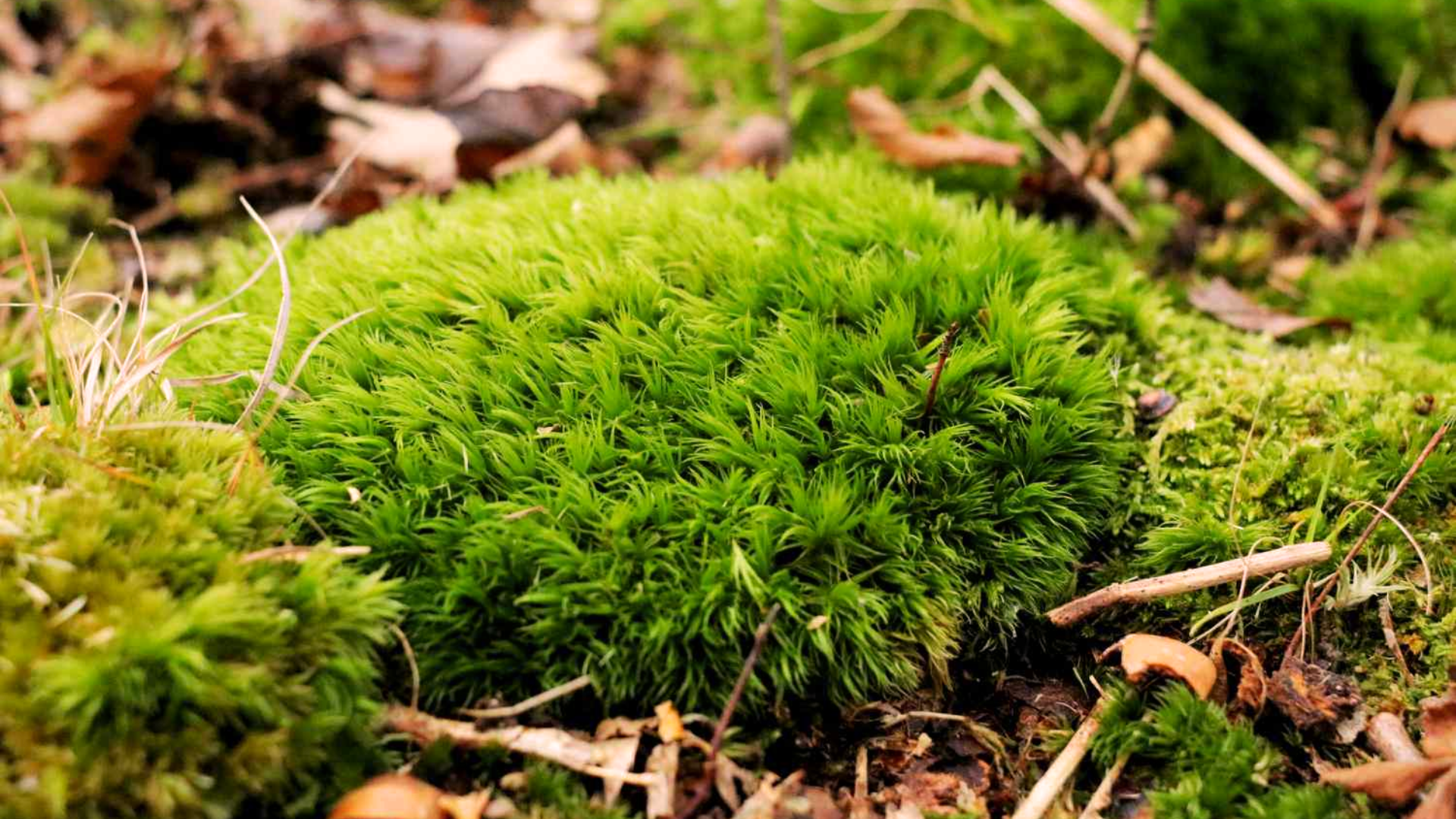
Moss is a small, simple plant that grows low to the ground in soft, green patches. Unlike most plants you know, moss doesn’t have roots, flowers, or seeds. Instead, it has tiny leaf-like structures that absorb water directly.
You’ll often find moss growing in shady, damp areas where other plants struggle. Look for it on the north side of trees, between patio stones, on old roofs, or in parts of your lawn that don’t get much sun. Moss loves moisture and can thrive on many surfaces.
In your yard or garden, you might spot a few common types. Cushion moss forms rounded, puffy mounds that look like green pillows. Sheet moss spreads out flat, creating a carpet-like cover over soil or rocks. Hair cap moss stands a bit taller with star-shaped tops.
I’ve noticed that moss often appears where grass is thin or struggling. This isn’t because moss kills grass – it’s simply better at surviving in those tough spots. The small size of moss can be misleading. These plants are actually quite tough and have been around for millions of years!
What Causes Moss to Grow?
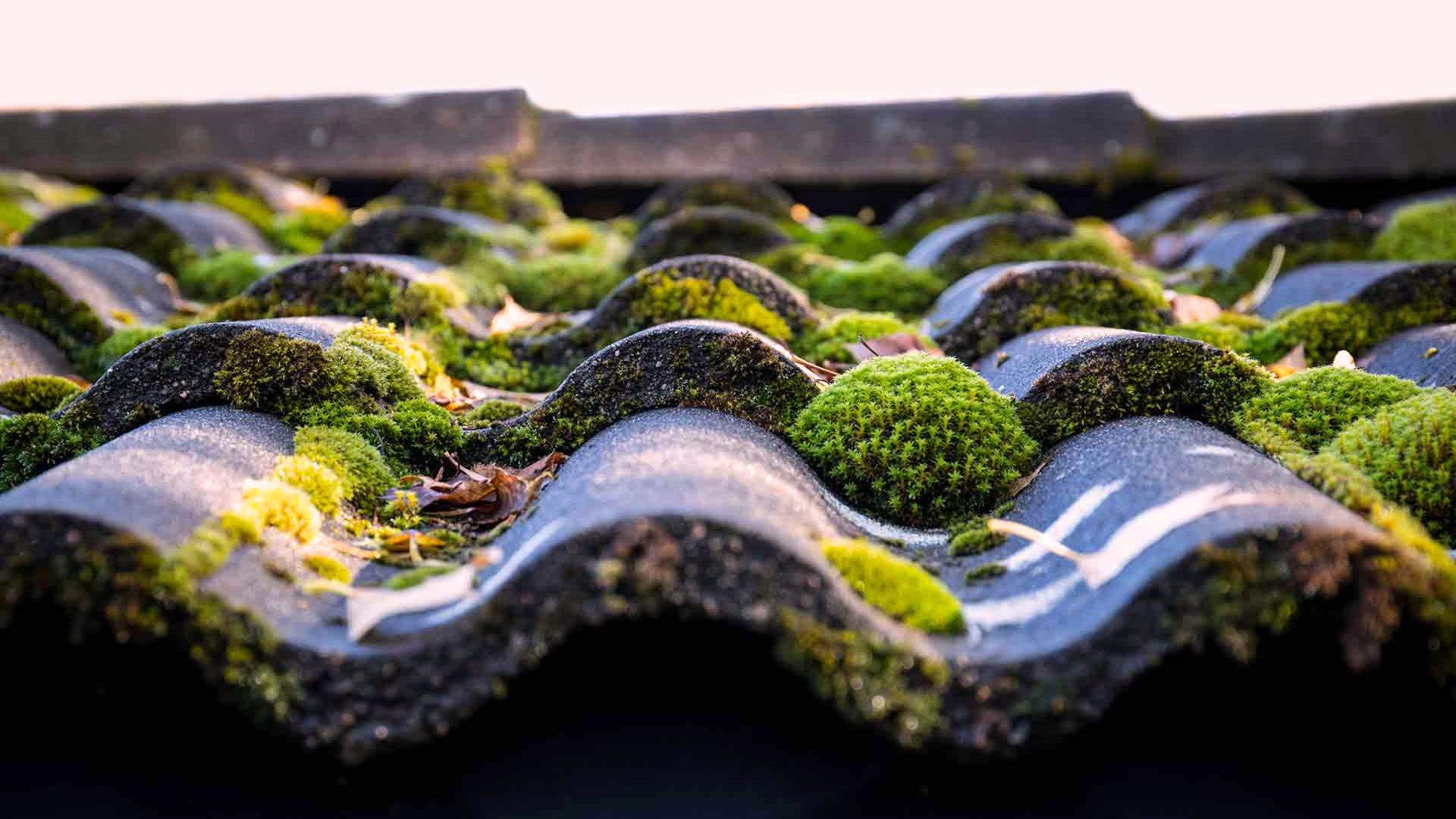
1. Shade and Low Sunlight
Moss thrives in places where sunshine is limited. I’ve found that moss often pops up in areas that get less than 3-4 hours of direct sun each day. When trees block sunlight or buildings cast shadows on your lawn, moss sees an opportunity. You might notice it growing on the north side of your house where the sun rarely reaches.
2. Compacted or Poorly Drained Soil
When soil gets packed down tight, water sits on top instead of soaking in. This creates perfect conditions for moss to take hold. Heavy foot traffic, parked cars, or construction can press soil down over time. Your lawn might feel hard underfoot in these areas, and grass will struggle while moss moves in.
3. Low Soil pH
Moss prefers soil that’s on the sour side. Most grass likes a pH between 6.0 and 7.0, but moss is happy in more acidic soil with a pH of 5.0 to 5.5. Pine needles, oak leaves, and certain fertilizers can make your soil more acidic over time. You can test your soil pH with a simple kit from a garden store.
4. Excess Moisture or Humidity
Too much water creates ideal moss conditions. I’ve noticed that areas where water pools after rain or spots near downspouts often develop moss quickly. If your soil stays wet for days after rain, or if you live in a humid climate, moss will find these wet spots very welcoming.
5. Poor Air Circulation
When air doesn’t flow freely around plants, moisture hangs around longer. Tight spaces between buildings, crowded plant beds, and dense tree canopies limit airflow. You might see moss growing in these still, damp areas where other plants can’t dry out properly between waterings.
6. Low Nutrient Levels in Soil
Moss doesn’t need rich soil to grow. In fact, it does better in poor soil where other plants can’t compete. When your lawn or garden soil lacks key nutrients like nitrogen, grass and other plants weaken. This gives moss a chance to move in and spread without much competition.
Is Moss Bad for Your Lawn or Garden?
Moss itself isn’t harmful to your outdoor space. It’s simply taking advantage of conditions that already exist. I often tell people that moss is neither good nor bad – it’s just a plant that grows where conditions suit it.
When you see moss, think of it as a messenger. It’s telling you something about your lawn or garden conditions.
| Pros of Moss | Cons of Moss |
|---|---|
| Adds natural green color to shady areas | May indicate poor growing conditions for other plants |
| Requires no mowing or maintenance | Can make surfaces slippery when wet |
| Stays green year-round in many climates | Might compete with grass in lawn areas |
| Creates a soft, cushioned ground cover | Can spread to unwanted areas |
| Helps prevent soil erosion | May block water drainage on roofs or pavement |
| Uses very little water once established | Shows that soil might be too acidic for other plants |
In natural areas like woodland gardens, moss is completely harmless and often adds a nice touch. I’ve created whole garden areas using moss as the main plant, and they look beautiful with very little care.
However, if your goal is a thick lawn or growing certain garden plants, the presence of moss tells you that something needs to change. The same conditions that help moss thrive often make it hard for grass to grow well.
You don’t need to remove moss unless it’s growing where you want other plants to grow. Even then, simply pulling out the moss won’t solve the underlying issues. Fix the basic conditions first, and the moss will have a harder time coming back.
How to Prevent Moss Growth?
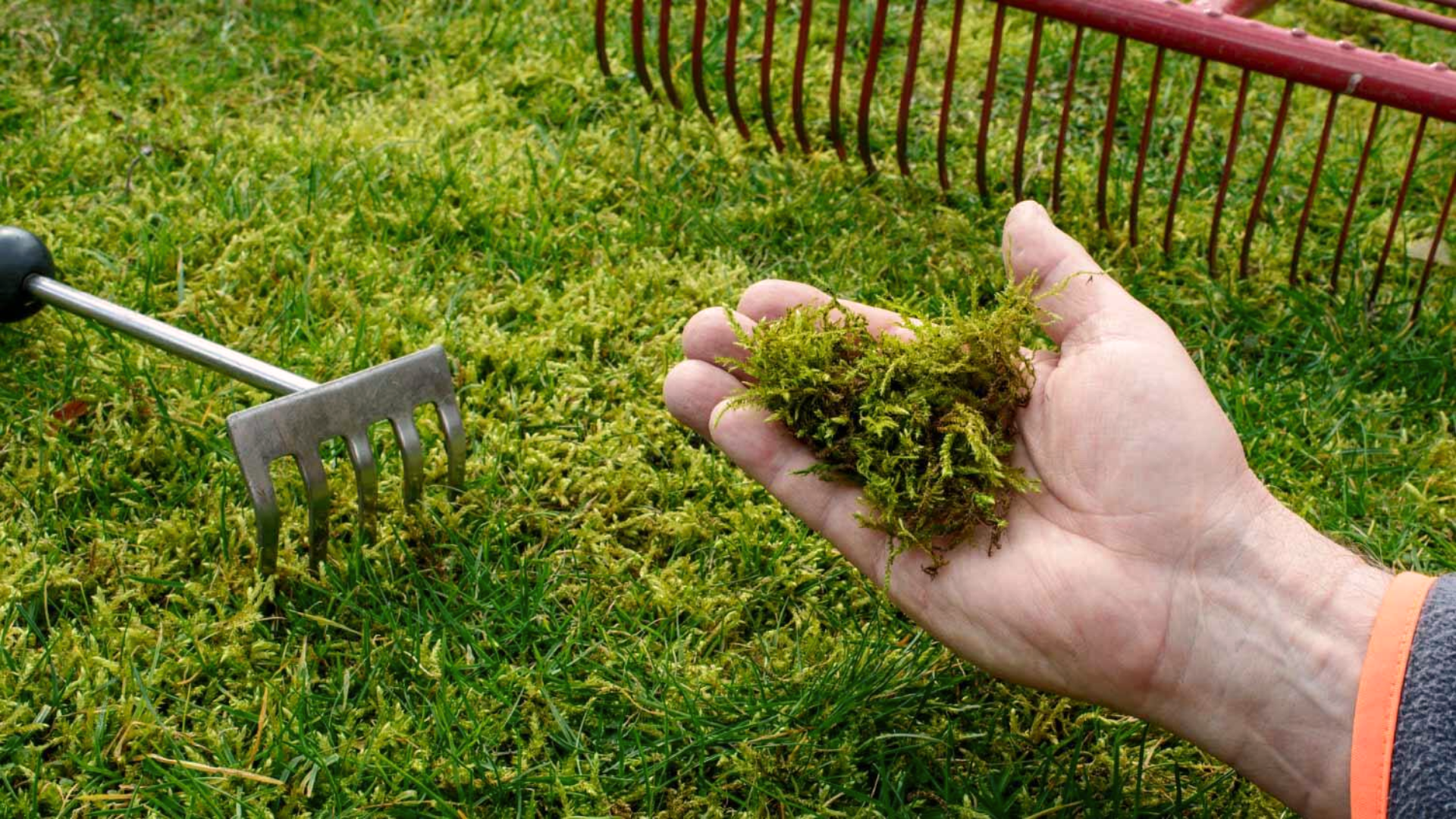
1. Improve Sunlight and Airflow
To stop moss from growing, you need to bring in more sun. I suggest trimming tree branches that block light from reaching your lawn. You can also prune shrubs to let more sunshine hit the ground. If a fence or building creates shade, consider growing shade-loving plants instead of grass in that spot.
Better air movement helps too. When plants are spaced too closely, they trap moisture. You can thin out crowded areas by removing some plants or cutting back overgrown ones. This allows air to flow between plants, helping the ground dry faster after rain or watering.
2. Test and Adjust Soil pH
Moss likes acidic soil, but most lawn grasses don’t. You can buy a simple soil test kit at any garden store. Testing is easy – just follow the steps on the package. If your soil pH is below 6.0, it’s too acidic for good grass growth.
To make soil less acidic, you can add lime. Garden lime comes in powder or pellet form. Always follow the package directions for how much to use. It takes time for lime to work – often several months – so be patient. I usually apply lime in the fall so it has all winter to change the soil.
3. Fix Drainage and Reduce Excess Moisture
Standing water is a moss magnet. Look for low spots in your yard where water collects after rain. You can fill these areas with topsoil to level them out. For bigger drainage problems, you might need to install a drain pipe or create a rain garden.
Check your gutters and downspouts too. Make sure they direct water away from your house and lawn. A simple downspout extension can move water to where it won’t cause problems. If you water your garden, do it in the morning so plants have time to dry before nightfall.
4. Aerate and Enrich the Soil
Hard, packed soil holds water at the surface where moss can use it. Aerating creates small holes in the soil that let water sink in deeper. You can rent an aerator machine or use a hand tool for small areas. I try to aerate my lawn once a year to keep the soil from getting too hard.
After aerating, add compost or a balanced fertilizer to feed your grass or garden plants. When lawn grass grows thick and healthy, it blocks light from reaching the soil surface, making it harder for moss to get started. Topdress your lawn with a thin layer of compost after aerating to add nutrients and helpful microbes to the soil.
Natural vs. Chemical Moss Control Methods
When moss becomes a problem, you have two main ways to deal with it: natural methods or chemical products. I’ve tried both approaches over the years and found that each has its place depending on your situation.
Before removing moss, remember that it’s often just a symptom of other issues. Fixing those underlying problems will give you better long-term results.
| Natural Methods | Chemical Methods |
|---|---|
| Safe for children, pets, and wildlife | Work quickly – often within days |
| No harmful runoff into waterways | May prevent moss return for longer periods |
| Often cheaper using household items | Cover larger areas with less effort |
| Take more physical effort | Can harm other plants if not applied carefully |
| Work more slowly – may take weeks | Some products contain harsh ingredients |
| May need to repeat treatments more often | More expensive than natural solutions |
No matter which method you choose, the best time to remove moss is during dry weather when moss is dormant. Once removed, work on improving the conditions that allowed moss to grow in the first place.
When to Embrace Moss Instead?
Sometimes fighting moss is more trouble than it’s worth. In many cases, I’ve found that working with moss rather than against it makes gardening easier and more enjoyable.
Moss can be a friend to the busy gardener. It needs almost no care once established – no mowing, no fertilizing, and very little water except during the driest times. This makes it a good choice for areas where you don’t want to spend much time on maintenance.
Your yard becomes more earth-friendly when you include some moss areas. Moss gardens have been valued for centuries in many cultures. The Japanese have perfected the art of moss gardening, creating peaceful green spaces that look good year-round.
You can start small by allowing moss to grow between stepping stones or around the base of trees. If you decide to create a moss garden, start by clearing the area of weeds and debris. Keep the area moist while the moss gets established.
You can transplant moss from other parts of your yard or buy moss online from specialty nurseries. Within a few months, you’ll have a soft, green carpet that stays looking good with minimal effort.
Conclusion
Moss grows in your yard when the conditions are right – shade, moisture, acidic soil, poor drainage, and limited airflow create the perfect moss habitat. These small plants are simply filling a natural gap in your garden.
As a beginner, remember that moss isn’t your enemy. It’s a sign of specific conditions in your outdoor space. You can choose to change those conditions or work with what you have.
Start by observing where moss appears in your yard and asking why it’s growing there. Sometimes the easiest solution is to let it be, especially in hard-to-maintain areas.
I hope this guide helps you understand the how and why of moss growth. Whether you decide to remove it or welcome it into your garden, you now have the knowledge to make that choice wisely. Your garden is unique, and the best approach is the one that works for your specific situation.


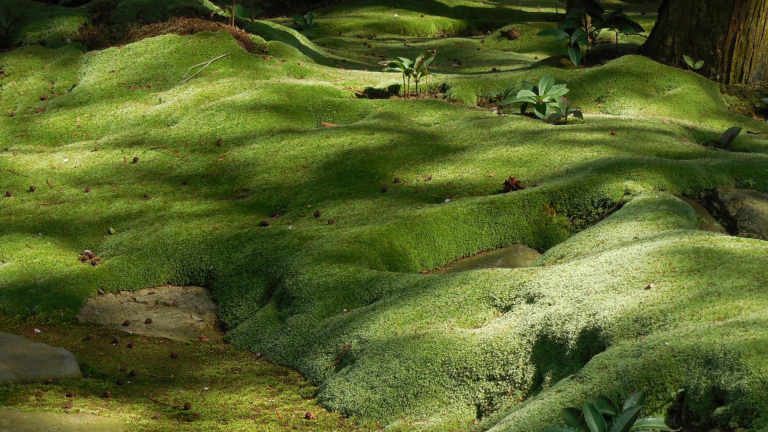




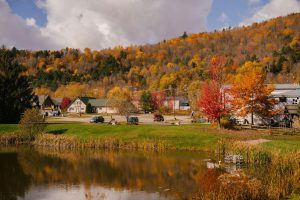
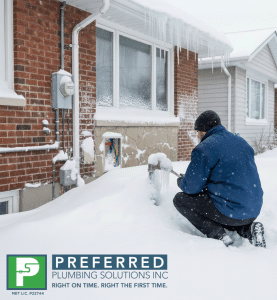




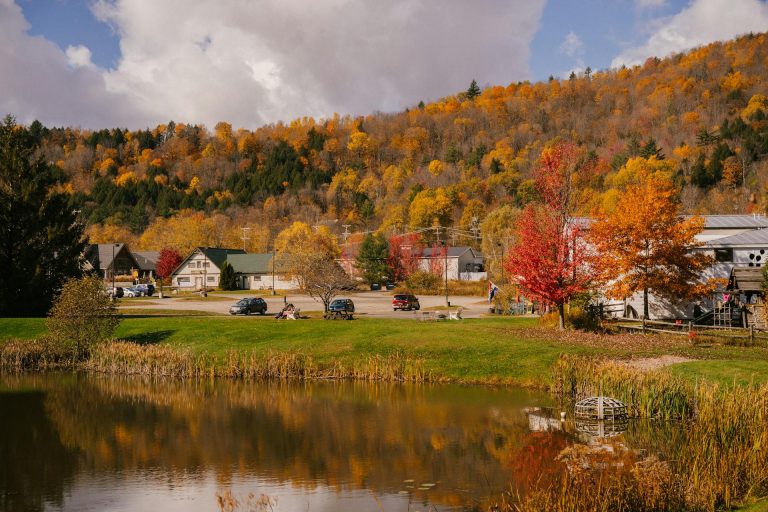
One Response
I have a chase shrub plant… I have had it for about 4 years and one won’t grow and the other gets moss on its limbs….
I have a cutting from and she is in a pot and seems to be larger than the mom..